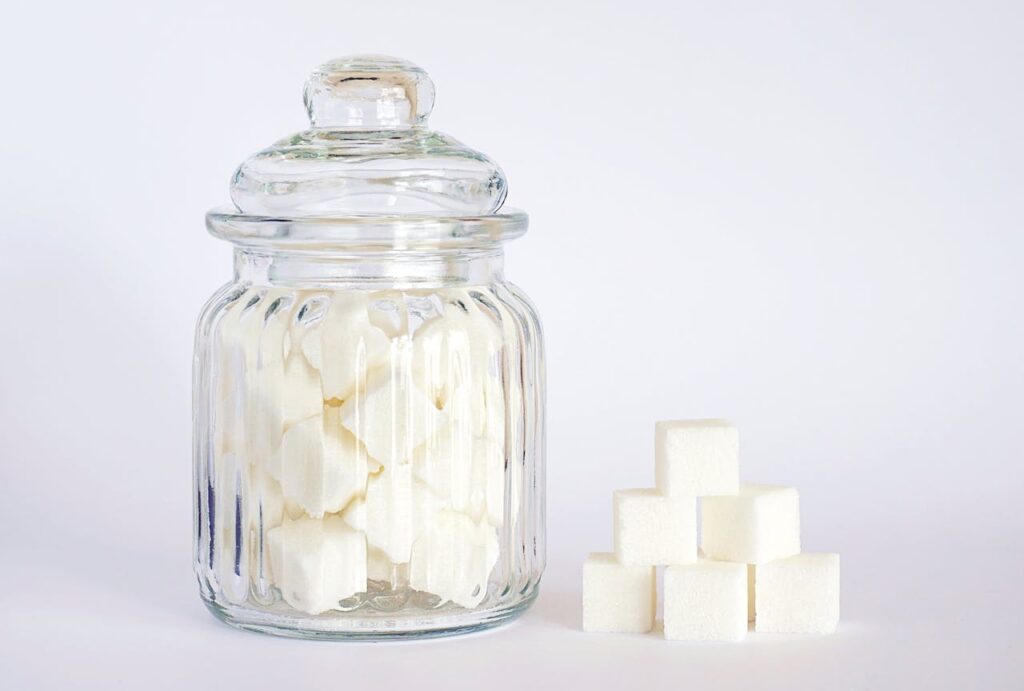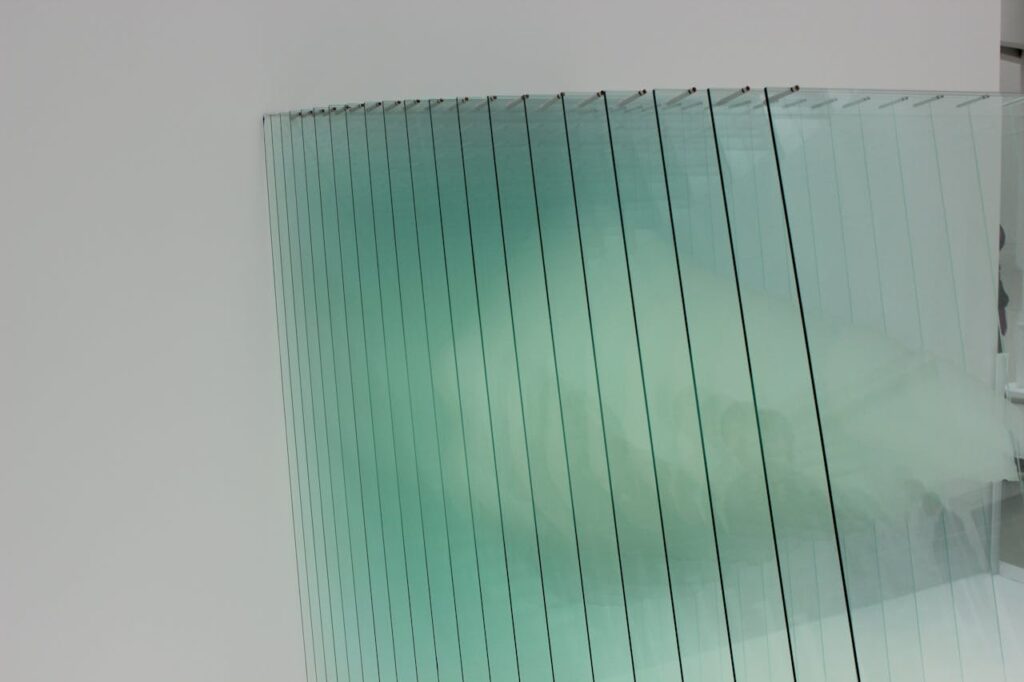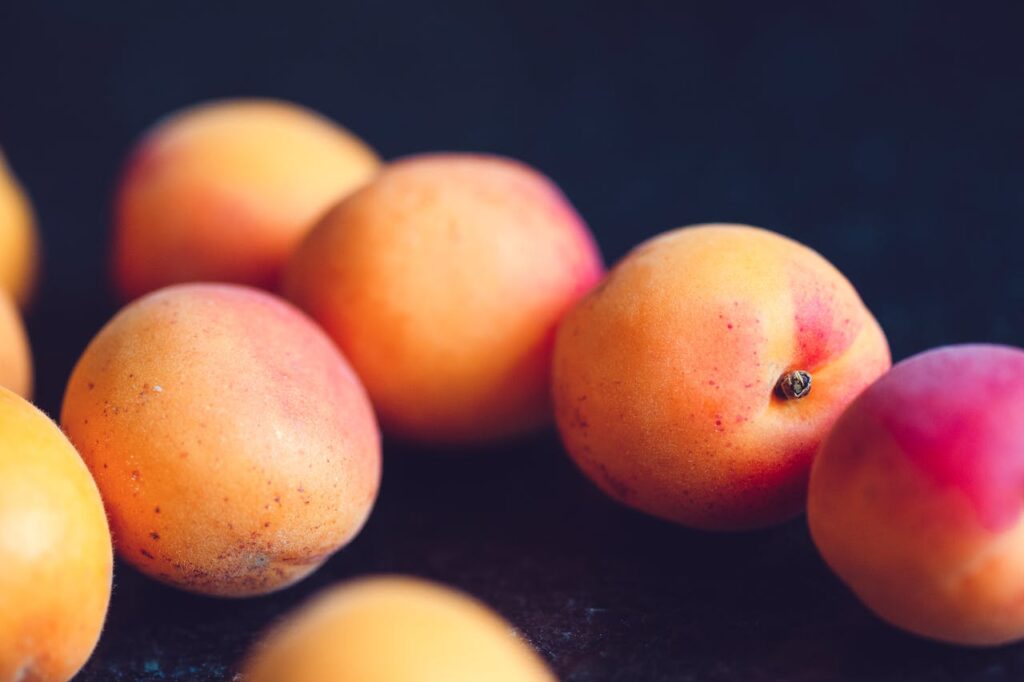In the field of laboratory analysis, the spectrophotometer occupies a central place. This instrument is essential for identifying and quantifying the chemical substances present in a solution by measuring their capacity to absorb light. Thanks to its efficiency, precision and versatility, it is widely used in various sectors such as food , cosmetics , animal health, the environment and biomedical research. Understanding the operation, role and applications of the spectrophotometer allows us to grasp its strategic importance in quality control, regulatory validation and product development processes.
YesWeLab supports manufacturers in the implementation of these spectrophotometric analyses by relying on a network of specialized laboratories that comply with current standards.
Table of Contents
What is a spectrophotometer?
Definition and fundamental principles
A spectrophotometer is an analytical instrument used to measure the absorbance of a substance dissolved in a liquid. Absorbance is the amount of light absorbed by the solution when a light beam of a specific wavelength passes through it. This measurement is directly related to the concentration of the substance being analyzed, according to a fundamental principle of analytical chemistry: the Beer-Lambert law .
Unlike a simple spectrometer, which can analyze an entire light spectrum, the spectrophotometer is designed to make a precise measurement at one or more selected wavelengths. It converts the intensity of the transmitted light into a numerical absorbance value, which allows a direct relationship to be established with the quantity of the molecule present in the sample.
Difference between spectrophotometer and spectrometer
These two terms are sometimes used interchangeably, but they refer to different devices. A spectrometer is a more general instrument used to analyze light based on its spectral components. It is used to determine the composition of a sample by identifying the wavelengths emitted or absorbed. A spectrophotometer, on the other hand, is a specialized device that precisely measures the absorbance (or transmittance) of a sample at a specific wavelength. It is therefore more geared toward quantitative analysis.
Scalable technology serving laboratories
Since its development in the early 20th century, the spectrophotometer has undergone numerous technical improvements. Modern models are capable of automatically scanning a wide range of wavelengths, storing data, transferring it to an information system, or even operating in dual beam mode to improve measurement accuracy. Detection technologies have also diversified: photodiodes, photomultipliers (PMTs), CCD sensors, offering different levels of sensitivity and resolution.
Today, there are spectrophotometers suitable for every use: compact devices for field use, automated systems for serial analyses, or high-precision models for scientific research.
An essential tool in laboratory analysis
The spectrophotometer is used daily in many analytical laboratories . It is used to measure active substances, identify contaminants, validate the concentration of an active ingredient or monitor chemical reactions. In the food industry, it is used to analyze the content of colorants, vitamins, acids or sugars. In cosmetics, it is used to check the concentration of active ingredients in a formulation. In the environment, it is used to control water pollution by measuring nitrates, phosphates or dissolved metals.
Its ability to provide reliable, reproducible and rapid results makes it an essential tool in any quality control or product development strategy, particularly in an increasingly demanding regulatory context.

What is the role of the spectrophotometer?
Measure the absorbance of a solution
The main function of a spectrophotometer is to measure the absorbance of a solution at a specific wavelength. Absorbance is a unitless physical quantity that quantifies the loss of intensity of a light beam as it passes through a medium. The more light a solution absorbs, the higher the measured absorbance will be.
This measurement is based on the principle that certain molecules absorb light at specific wavelengths. For example, DNA has a maximum absorbance around 260 nm, while many proteins absorb at 280 nm. By analyzing the absorbance at these specific wavelengths, the spectrophotometer can detect the presence of these compounds in a sample.
Quantify a substance using Beer-Lambert's law
One of the major advantages of the spectrophotometer is its ability to quantify a substance in solution. This quantification is based on the Beer-Lambert law, which establishes a direct relationship between absorbance (A), the concentration of the substance (C), the molar absorption coefficient (ε) and the optical path length (l), generally 1 cm in standard cuvettes:
A = ε × l × C
Thus, if we know the value of the molar absorption coefficient for a given substance at a specific wavelength, it becomes possible to calculate its concentration in a sample by simply measuring the absorbance. This principle is commonly used in laboratories to perform colorimetric assays, that is, to measure the concentration of an analyte from its color or its ability to absorb light.
For example, in the context of the dosage of malic acid, used in the food and cosmetics sectors, spectrophotometry makes it possible to evaluate the concentration of the acid in a jam or a skincare cream, with great precision.
Identify the presence of a specific compound
In addition to quantification, the spectrophotometer also allows for compound identification. Each molecule has a absorbance spectrum , much like an optical fingerprint. By scanning different wavelengths and recording the absorbance, it is possible to obtain a spectrum that allows a compound to be identified by comparison with databases of reference spectra.
This capability is particularly useful for verifying the identity of an active ingredient, detecting contamination or validating a production batch in regulated sectors.
Control product quality and conformity
In an industrial context, the spectrophotometer plays a crucial role in quality control . It ensures that products meet specified concentrations, that the formulation is consistent, or that the raw material used is compliant. For example, in the cosmetics sector, it is used to control the concentration of sunscreens or lightening active ingredients, and to guarantee batch reproducibility.
Additionally, some regulations require verification of maximum permitted concentrations, particularly for active substances, preservatives, or colorants. The spectrophotometer is therefore essential for documenting regulatory compliance, particularly in relation to ISO 17025 standards or COFRAC accreditations required for analyses carried out by partner laboratories such as those of YesWeLab.
Measuring the stability of formulations over time
In an industrial context, the spectrophotometer plays a crucial role in quality control . It ensures that products meet specified concentrations, that the formulation is consistent, or that the raw material used is compliant. For example, in the cosmetics sector, it is used to control the concentration of sunscreens or lightening active ingredients, and to guarantee batch reproducibility.
In addition, certain regulations require the verification of maximum authorized concentrations, particularly for active substances, preservatives or colorants. The spectrophotometer then proves essential for documenting regulatory compliance, particularly in relation to ISO 17025 standards or COFRAC accreditations required in analyses carried out by laboratories such as those in the YesWeLab .
Are you looking for an analysis?

What is the purpose of spectrophotometry?
A precise quantitative analysis method
The main purpose of spectrophotometry is to provide a simple, fast, and reliable method of quantitative analysis. By measuring the amount of light absorbed by a solution at a given wavelength, this technique allows the precise determination of the concentration of one or more chemical compounds. It is used to analyze solutions containing organic or inorganic substances, dyes, proteins, nucleic acids, metals, and environmental pollutants.
This ability to quantify very low concentrations, sometimes down to the nanogram level, makes it an ideal method in sectors requiring high sensitivity. This is the case in molecular biology, food quality control, cosmetic formulation, or environmental analyses.
A non-destructive and reproducible method
Spectrophotometry has the advantage of being a non-destructive technique . The sample being analyzed is not significantly altered by the passage of the light beam, which allows the sample to be reused or preserved for further testing. This is particularly valuable in cases where the available quantity is limited, or when several analyses are planned on the same sample.
In addition, the method is highly reproducible as long as the analysis conditions are standardized: fixed wavelength, clean cuvette, controlled temperature. This reproducibility is essential for ISO 17025 accredited laboratories, which must guarantee the consistency and reliability of their results over time.
An aid to the identification of compounds
Beyond assays, spectrophotometry also allows for qualitative analysis through the study of absorption spectra. Each molecule has its own optical signature, with absorbance peaks at specific wavelengths. By scanning a sample over a wide range of wavelengths (from 190 to 1100 nm for some UV-visible models), a complete spectrum can be obtained, which can be used to identify an unknown compound by comparison with spectral databases.
This functionality is notably used in analytical chemistry to characterize substances in complex mixtures, or to control the conformity of an active ingredient in an industrial formulation.
A technique for quality control
The purpose of spectrophotometry in industrial laboratories is often related to the quality control of raw materials, finished products or packaging . For example, in the food industry, it can be used to monitor the concentration of dyes, additives or vitamins. In cosmetics, it is used to measure UV filters or lightening active ingredients. In the environment, it is used to assess the content of nitrates or organic substances in water.
By carrying out regular measurements, quality teams can validate batch conformity, identify manufacturing deviations, or even anticipate formulation deviations.
An essential tool in regulatory studies
Spectrophotometry is also used in regulatory compliance studies . European (INCO, EC 1935/2004) and American (FDA) regulations impose strict limits on the concentration of certain substances in consumer products. Spectrophotometry can demonstrate, with supporting documents, that these thresholds are not exceeded.
For example, packaging that comes into contact with food must be tested to verify the absence of migration of undesirable compounds. In this context, spectrophotometry is one of the methods used to detect the presence of organic acids, dyes, or potentially released metals. YesWeLab supports its clients with these issues by offering migration analyses that comply with CE and FDA standards.
A technique integrated into multi-analytical protocols
Finally, spectrophotometry is frequently used as a complement to other analytical techniques . It is often integrated into combined protocols with liquid chromatography (HPLC) , mass spectrometry (MS), or rheological analysis. For example, in the analysis of malic acid , laboratories may use spectrophotometry for a rapid initial determination, before validating the results with a more precise method such as HPLC.
This complementarity between techniques makes it possible to strengthen the reliability of the results and to adapt the methods to the specific requirements of the industrial sectors concerned.

How the spectrophotometer works: scientific and technical principle
The principle of absorbance
The operation of the spectrophotometer is based on a fundamental principle: certain molecules absorb light when exposed to a specific wavelength. This absorption results in a decrease in the measured light intensity after the beam passes through the sample. The spectrophotometer quantifies this loss in the form of a value called absorbance .
Absorbance is related to transmittance (the ratio of the intensity of transmitted light to that of incident light), according to the relationship:
A = −log10(I / I₀)
Or :
- A is the absorbance,
- I is the light intensity transmitted through the sample,
- I₀ is the initial light intensity.
A high absorbance means that the solution absorbs a lot of light, which generally corresponds to a higher concentration of the substance being analyzed.
Beer-Lambert's Law
The scientific basis of quantitative analysis by spectrophotometry is based on the Beer-Lambert law , which expresses the relationship between the absorbance and the concentration of a solution:
A = ε × l × C
Or :
- A is the measured absorbance,
- ε is the molar absorption coefficient (expressed in L·mol⁻¹·cm⁻¹),
- l is the optical path length (usually 1 cm),
- C is the concentration of the solution (mol/L).
This equation shows that absorbance is proportional to concentration, provided ε is known and the cuvette length is kept constant. The law is valid for dilute solutions (usually less than 0.01 mol/L), making it a method of choice for low-concentration laboratory analyses.
The role of wavelength
The choice of wavelength is an essential parameter to guarantee the sensitivity and selectivity of the measurement. Each molecule has an absorbance spectrum , with peaks corresponding to the wavelengths where absorption is maximum. The spectrophotometer must therefore be calibrated to send a light beam centered on this specific wavelength.
For example, malic acid exhibits significant absorption in the UV range, as do nucleic acids (DNA at 260 nm). In contrast, proteins are often measured at 280 nm. This setting improves measurement accuracy by limiting interference from other compounds in the solution.
In enzymatic analyses, a wavelength is sometimes selected where only one of the reaction products absorbs. This is the case for NADH, measured at 340 nm, while its precursor NAD⁺ does not absorb at this wavelength. This allows for precise monitoring of biochemical reactions.
The steps of a spectrophotometric analysis
A spectrophotometric analysis generally follows the following steps:
- Sample preparation : possible dilution, addition of reagents, homogenization.
- Choice of wavelength : determined from literature or a previous spectrum.
- Blank setup : cuvette containing only the solvent or the mixture without analyte, to calibrate the instrument.
- Absorbance measurement : reading the absorbance value for the sample at the chosen wavelength.
- Calculation of concentration : application of the Beer-Lambert law or comparison with a calibration curve.
This standardized procedure is rapid (a few minutes per sample), inexpensive, and reproducible, which explains its wide adoption in quality control laboratories.

Types of spectrophotometers and available technologies
Single beam spectrophotometer
The single-beam spectrophotometer is the simplest and most widely used model in teaching, quality control, or production laboratories. In this type of device, a single light beam is used to perform measurements. The operator begins by inserting a cuvette containing the "blank" (solvent or matrix without analyte) to calibrate the device, then replaces this cuvette with the one containing the sample to be analyzed.
This model has several advantages:
- relatively low acquisition cost,
- ease of use,
- reduced footprint.
However, it is more sensitive to fluctuations in the light source or variations in ambient temperature, since no simultaneous measurements are made on a reference sample. For routine applications where absolute reproducibility is not critical, the single-beam spectrophotometer remains an excellent choice.
Dual beam spectrophotometer
The dual-beam spectrophotometer is more sophisticated. It divides the light beam into two parts: one passes through the sample, the other through the reference solution (the blank). Both signals are measured simultaneously, which allows instant correction for fluctuations in the light source and significantly improves the stability and accuracy of the measurements.
This type of device is recommended in research laboratories or for analyses requiring high reliability, such as those carried out in the pharmaceutical or cosmetic sectors. It allows in particular:
- better kinetic monitoring,
- more reproducible measures over the long term,
- partial automation in analysis series.
UV-visible spectrophotometer
The UV-visible spectrophotometer is the most common model in modern laboratories. It allows analyses to be carried out in two complementary spectral ranges:
- Ultraviolet (190 to 380 nm), used for the analysis of nucleic acids, proteins, food additives or pesticide residues.
- Visible (400 to 800 nm), used for colorimetric assays, pigments, or cosmetic dyes.
UV-visible devices are versatile and suitable for a wide variety of samples. They can be used for single or serial analyses and are compatible with a wide range of operating software for data processing, concentration calculations, and analysis report generation.
Visible spectrophotometer
Some models are limited to visible light (400 to 800 nm). These visible spectrophotometers are sufficient for basic colorimetry applications or for analyzing substances with absorption in the visible spectrum (dyes, fruit juices, textile dyes, etc.).
They are generally more compact and economical, but their scope of application is limited by the impossibility of carrying out measurements in the UV.
Portable spectrophotometer
Portable or benchtop spectrophotometers are designed for in situ analysis or in production environments. They are used, for example, for:
- measure the color of a product directly on a production line,
- analyze water quality in the field,
- carry out a quick check in the warehouse or collection center.
Compact, lightweight, and often equipped with rechargeable batteries, these devices allow for rapid decision-making without waiting for samples to be sent to the lab. Their accuracy is slightly lower than that of laboratory models, but their responsiveness more than makes up for this in many industrial settings.
Criteria for choosing a spectrophotometer
The choice of a spectrophotometer depends on several factors, linked to the specific needs of each laboratory:
- Spectral range : UV-visible or visible only?
- Beam type : single or double?
- Sensitivity : desired detection level (expressed in A or ng/µl).
- Targeted applications : molecular biology analyses, cosmetics, food products, environment, etc.
- Budget : some high-performance models can exceed several tens of thousands of euros.
- Ergonomics and connectivity : compatibility with analysis software, possibility of data export, touch screen, etc.
YesWeLab works with laboratories equipped with different technologies, allowing the spectrophotometric method to be adapted to the sample type, matrix, and analytical objectives of the client. Thanks to this flexibility, manufacturers benefit from a tailor-made solution, compliant with current regulatory requirements.

Applications of spectrophotometry in laboratory analysis
In biology and biochemistry
Spectrophotometry is a fundamental tool in biology and biochemistry laboratories. It is used to quantify biomolecules, monitor enzymatic reactions, or assess the purity of biological extracts.
- Quantification of DNA, RNA, and Proteins :
Absorbance measured at 260 nm is used to determine the concentration of nucleic acids (DNA, RNA), while absorbance at 280 nm gives an estimate of the protein concentration. The A260/A280 ratio is used to assess the purity of a DNA sample. A ratio of 1.8 to 2.0 indicates good purity, while a lower ratio suggests protein contamination. - Monitoring enzyme kinetics :
Many enzymatic reactions involve cofactors such as NADH, which can be measured at 340 nm. By monitoring the change in absorbance over time, it is possible to calculate the enzymatic reaction rate and determine kinetic parameters such as the Michaelis-Menten constant (Km) or the maximum rate (Vmax). - MTT test :
Used to assess cell viability, this test relies on the conversion of tetrazolium salt (yellow) into formazan (purple) by living cells. The amount of formazan is measured at 570 nm, which indirectly estimates the number of living cells in a sample.
In the food industry
In the food industry, spectrophotometry is used for quality control of raw materials and finished products.
- Determination of sugars, organic acids and vitamins :
Many analyses are carried out in UV-visible, such as the measurement of vitamin C at 265 nm or malic acid by reading in UV after chemical reaction. These measurements help ensure that products comply with nutritional declarations or regulatory requirements. - Pigment and colorant monitoring :
The color intensity of products such as fruit juices, jams, or sauces is controlled using visible spectrophotometry. This ensures consistent presentation from batch to batch.
In cosmetics
Cosmetic laboratories use spectrophotometry to ensure the quality, stability and regulatory compliance of products.
- Measuring cosmetic active ingredients :
Ingredients such as fruit acids (AHAs), UV filters, or colorants can be measured using spectrophotometry. For example, an active ingredient such as glycolic acid can be quantified in a cream using a UV reading. - Stability tests :
By subjecting products to conditions of heat, light or humidity, laboratories measure changes in absorbance to detect possible chemical degradation or loss of effectiveness. - Packaging control :
Spectrophotometry can also be used for testing the migration of substances from containers to the cosmetic product, in line with the requirements of EC Regulation No. 1223/2009 and EC Regulation No. 1935/2004 for contact materials.
In the environment
Spectrophotometry is a technique of choice for environmental analyses, particularly in the context of regulatory monitoring of water quality and industrial discharges.
- Analysis of nitrates, phosphates and ammonium :
These compounds are measured by spectrophotometry after color reaction with specific reagents. For example, the Griess method is used for the determination of nitrites. - Wastewater and effluent monitoring :
The absorbance of certain organic substances makes it possible to monitor the pollution of water or industrial waste. This data is often required in environmental assessments or regulatory files submitted to health authorities. - Detection of UV-active pollutants :
Some pesticides, hydrocarbons or aromatic compounds have a characteristic spectral signature in the UV range. They can be detected even at low concentrations using high-sensitivity spectrophotometers.
In industrial control and materials
In industrial control and materials
In industrial sectors such as automotive, plastics or printing, spectrophotometry is used to analyze solid or semi-solid materials.
- Transmittance and Opacity Measurement :
Materials such as glass, plastics, or films are tested to verify their transparency or their ability to block certain light radiation. - Colorimetric analysis :
In the textile or graphic sectors, spectrophotometry is used to control color fidelity according to colorimetric standards (e.g.: L a b* system). - Stability of formulations and aging of materials :
The materials are subjected to accelerated aging tests, and the evolution of their color or absorption is monitored to assess their resistance to usage conditions (UV, heat, humidity, etc.).
Thanks to its versatility, spectrophotometry can be integrated into all industrial sectors where the composition, color or stability of products must be measured, verified and documented precisely.

Example of spectrophotometric analysis in the laboratory: the case of malic acid
Malic acid is an organic acid naturally present in many fruits, including apples, grapes, and rhubarb. It is widely used in the food industry to adjust the acidity of finished products (confectionery, beverages, dairy products), and in cosmetics for its exfoliating and moisturizing properties, particularly as an alpha hydroxy acid (AHA).
Its concentration in products must be precisely controlled for reasons of sensory quality , cosmetic effectiveness and above all regulatory compliance . This is why it is the subject of numerous laboratory analyses, in particular by UV-visible spectrophotometry , which constitutes one of the most accessible and rapid methods for its quantification.
The analysis techniques used
Three main techniques are used to measure malic acid in the laboratory:
- UV-visible spectrophotometry :
This method relies on the ability of malic acid to absorb light in the ultraviolet range after derivatization or enzymatic reaction. Absorbance is measured at a specific wavelength, often between 260 and 280 nm, depending on the chosen protocol. It allows for rapid, reliable quantification and is particularly suitable for routine monitoring. - High-performance liquid chromatography (HPLC) :
More accurate than spectrophotometry, HPLC is often used as a reference method to validate results. It separates malic acid from other organic acids present in the sample (citric acid, lactic acid, etc.) and quantifies it with very high precision. - Acid-base titration :
This more traditional method relies on the chemical neutralization of malic acid with a base. It provides an estimate of the total acid content, but does not distinguish between the different acids present.
Practical applications of spectrophotometry for malic acid
- In the food industry :
Spectrophotometry is used to verify that food products meet regulatory acidity thresholds. For example, in jam production, the amount of malic acid must be adjusted to ensure proper preservation and a balanced taste. In wine, measuring malic acid allows monitoring of malolactic fermentation, which transforms this acid into the sweeter lactic acid. - In cosmetics :
Malic acid is used for its keratolytic (exfoliating) properties. It is used in the composition of creams, lotions, and masks. Its concentration must be rigorously measured to ensure the product's effectiveness without the risk of skin irritation. UV spectrophotometry allows for precise control of this concentration, particularly to comply with regulatory recommendations for AHAs (alpha-hydroxy acids).




